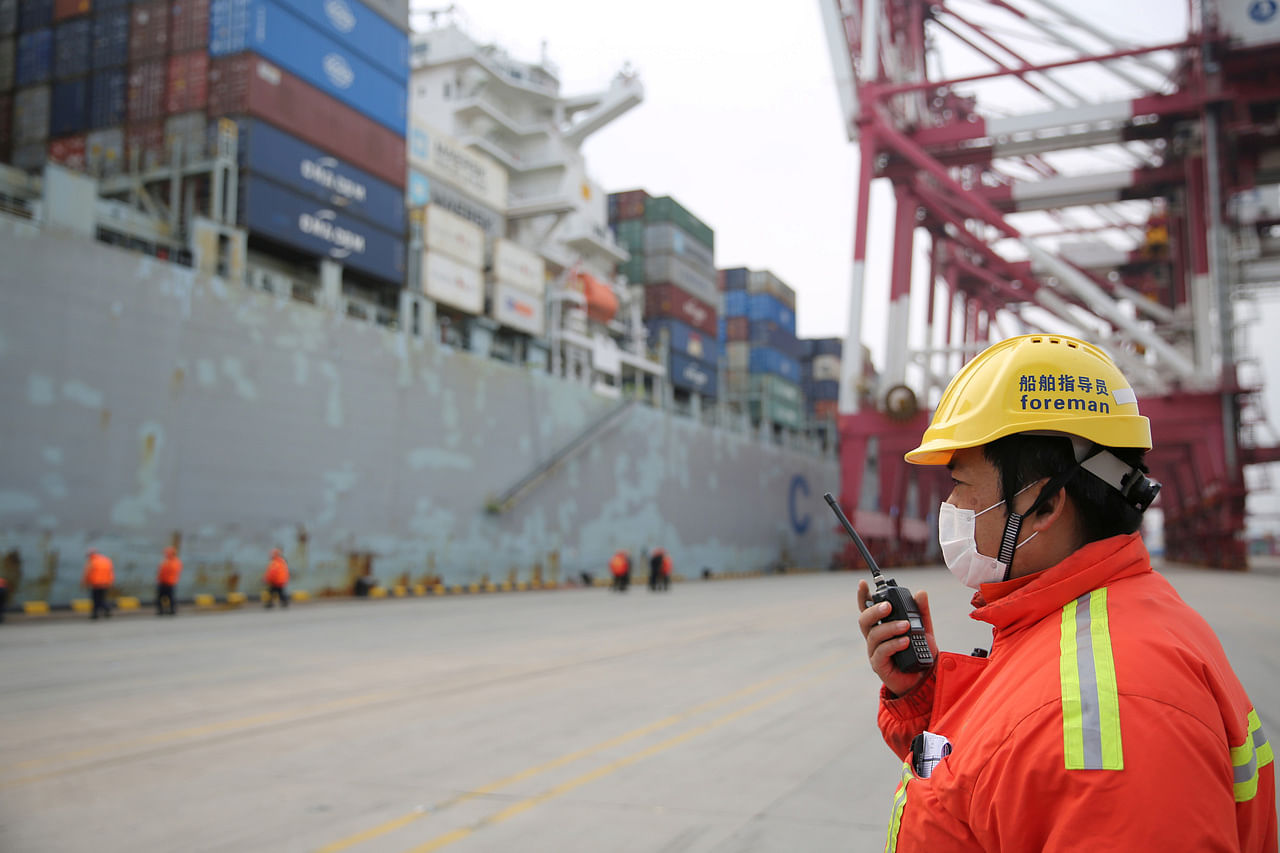Supply chains, interrupted: China's manufacturing hub hit by shipping delays
Costs of moving goods have risen beyond what is profitable for some amid competition for slots.
Sign up now: Get ST's newsletters delivered to your inbox

Workers assembling vehicles at a factory in Qingzhou in China’s Shandong province in September.
PHOTO: AFP
Follow topic:
BEIJING - Logistics agent Lily Chen now spends most of her work day wrangling for spots on cargo ships leaving China.
What used to take less than five minutes now occupies most of her working hours, after Covid-19 threw the shipping industry into chaos.
When the world shut down during the pandemic last year, shipping firms cut down on cargo routes.
But as the world economy started bouncing back, shippers have been scrambling to meet the sudden increase in demand, while grappling with delays in the Suez Canal, shut ports in China and a lack of logistics workers in the United States.
This has also resulted in astronomical freight rates of up to 10 times the pre-Covid-19 values, with some manufacturers simply choosing to stop shipping to the West because given the costs, it no longer made economic sense.
"It's very frustrating because you spend a day either not having your calls picked up, or getting rejected," Ms Chen, 32, told The Straits Times.
She works for a logistics company based in Guangzhou that specialises in shipments to Europe and North America.
Pre-Covid-19, China's southern manufacturing hubs used to send containers of goods - ranging from electronic devices like computers and mobile phones to clothing and even small items like toothpicks and rubber bands - around the world.
Each of these lots of cargo, after being packed into boxes, is stacked onto 1m-by-1m wooden pallets, which are then loaded into standard 20-foot or 40-foot-long containers that fill up ships sailing to major ports around the world.
With this process running like clockwork, it meant that many depended on "just in time" delivery, with little margin for error or delays.
But a series of events, beginning with the pandemic and China's manufacturing shutdown early last year, threw a spanner in the works, bringing the well-oiled machinery to a screeching halt.
While shippers managed to continue with the movement of goods for most of last year, the true impact of rerouted ships and shut ports started to truly hit this year, said Mr Herbert Lee, managing director of the Shenzhen branch of Whale Logistics (Shanghai).
China's strict Covid-19 policies meant extra processing time - with additional Covid-19 tests needed for both workers and goods, ships would often be stuck off the shores, leading to congestion around Chinese ports.
According to data from monitoring firm VesselsValue, this hit a peak in August, with nearly 350 ships waiting to dock at Chinese ports to either load or unload goods, three times the usual pre-Covid-19 number.
"The drop-off (in the number of ships) and subsequent increase in congestion at Chinese ports seen earlier this year was the result of ports returning to normal operations, but then having to face the coinciding events of Typhoon In-Fa and an outbreak of Covid at Ningbo Port," said VesselsValue trade analyst Gwen Billington.

<p>A foreman wearing a face mask works as a cargo ship docks at a container terminal of Qingdao port in Shandong province, China while the country is hit by an outbreak of the new coronavirus, February 4, 2020. cnsphoto via REUTERS ATTENTION EDITORS - THIS IMAGE WAS PROVIDED BY A THIRD PARTY. CHINA OUT.</p>
PHOTO: X80002
For shippers, a less reliable shipping schedule simply meant fewer slots and higher prices.
Previously, calling to book a shipping slot and loading a container with goods would take about four hours, said Mr Lee. That process now takes days.
"An additional complication is that we don't even know when we'll be assigned a slot. So we end up having to leave our goods at portside warehouses, which is more money.
"Then sometimes our drivers' nucleic acid tests expire because there has been a more than 48 hour delay, so they have to do a new test. All these things add up," he said.
Moving a pallet of goods from China to the west coast of North America now costs 10 times more, or roughly US$10,000 (S$13,700).
For some manufacturers, the cost of shipping has increased far beyond what is profitable.
Mr Ric Koh, who used to run a factory in Shenzhen, has shut down the production of computer accessories like USB hubs.
Instead, the business is now shifting its focus to ergonomic furniture that is produced by a contract manufacturer, which he says allows for a higher profit margin.
"When the cost of shipping something is nearly five times the cost of my product, I can't possible absorb it," he said.
"But when you pass that on to the consumer, who is going to pay $30 for a USB hub that originally cost less than $10?"

